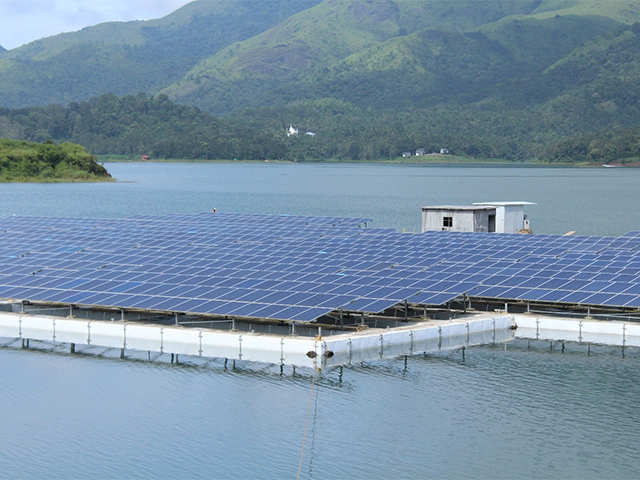India’s largest floating solar plant is now fully operational at Ramagundam in Telangana’s Peddapalli district. The 100-megawatt (MW) floating solar power photovoltaic project was commissioned by the National Thermal Power Corporation.
As of July 1, following the commissioning of the plant, the total commercial operation of floating solar capacity in the southern region has risen to 217 MW, according to the NTPC.
The 100MW floating solar plant spread over 500 acres of the NTPC’s reservoir at Ramagundam is built at a cost of Rs 423 crore through Bharat Heavy Electricals Limited on an EPC (engineering, procurement and construction) contract. Having moved past fossil fuels to hydro-, nuclear and renewable energy sources for power generation, the NTPC has set a target of producing 60GW (gigawatts) capacity through renewable energy sources, constituting nearly 45 per cent of its overall power generation capacity, by 2032.
What are floating solar plants?
Solar plants or solar farms can be either ground-mounted or set up on the surface of waterbodies. Though these floating farms are a bit more expensive than the traditional ones mounted on land surfaces, there are advantages as well.
At a time when large tracts of land are unavailable, floating farms do not require land to be acquired for the installation of photovoltaic panels. They are more efficient as the presence of water underneath helps them keep cool. They also reduce water evaporation, thereby saving more water for hydropower generation.
How are these panels kept floating?
At Ramagundam, the solar modules are placed across 500 acres on floaters manufactured with high-density polyethene material that keeps floating irrespective of water-level fluctuations. The entire spread is divided into 40 blocks, each having a capacity of 2.5 MW. Each of these blocks consists of a floating platform and an array of 11,200 solar modules. The floating platform consists of an inverter, transformer, and a high-tension circuit breaker.
How does it help the environment?
The solar panels floating on the water surface will reduce the evaporation rate and thereby help water conservation. Also, with a minimum land requirement, mostly for associated evacuation arrangements, available land can be put to better use unlike in the case of ground-mounted solar farms, which require large land surface areas.
At Ramagundam, approximately 32.5 lakh cubic metres per year of water evaporation can be avoided. The waterbody underneath the solar modules helps in maintaining their ambient temperature, thereby improving their efficiency and generation. Similarly, coal consumption of 1,65,000 tons can be avoided per year; carbon dioxide emissions of 2,10,000 tons per year can be avoided, according to the NTPC.
